
All categories
Featured selections
Trade Assurance
Buyer Central
Help Center
Get the app
Become a supplier

(1094 products available)
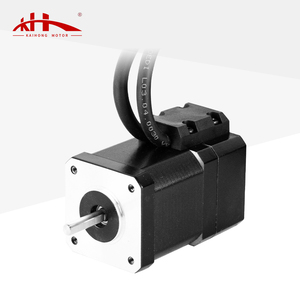






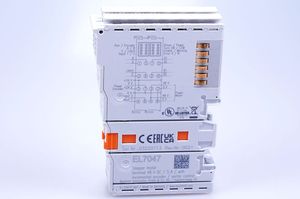

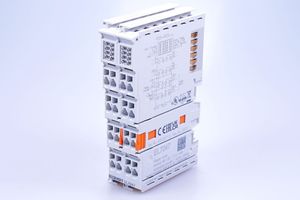

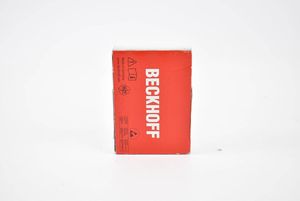


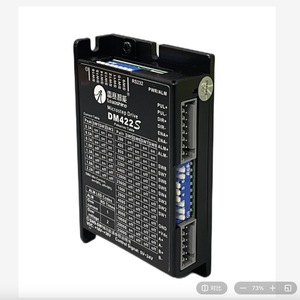
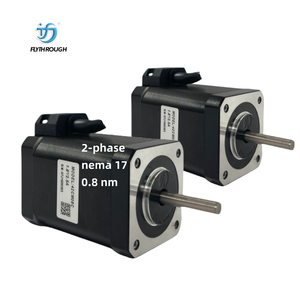
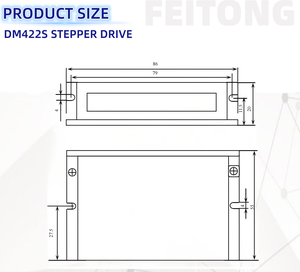










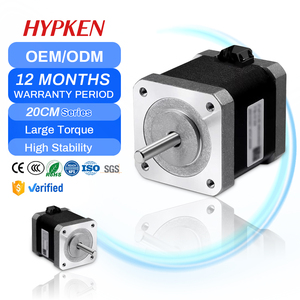


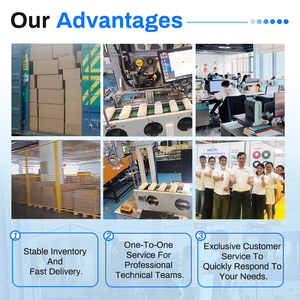






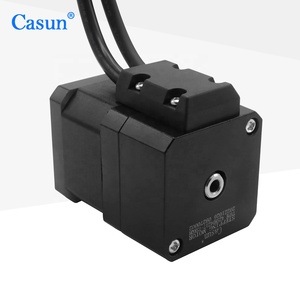
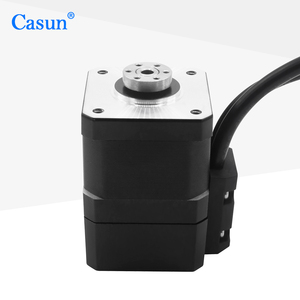
Incremental Encoders
Stepper motor nema 17 encoder is designed to provide position feedback by generating signals each time the motor shaft rotates a specified amount. Nema 17 incremental encoders are popular for their simple construction and effectiveness in position control. These encoders are used in applications where relative position tracking is required. They help in ensuring that the motor can accurately return to a certain position even though the encoder may not know the absolute position of the motor.
Absolute Encoders
Unlike incremental encoders, absolute encoders for stepper motors can provide the exact position of the motor shaft at all times. This characteristic makes them a suitable correction tool when there are mistakes in the position knowledge of the motor. Absolute encoders are useful in operations that need a positional certainty. These encoders come in one-turn and multi-turn varieties, depending on whether they register only the positions of the motor in a single rotation or in many rotations.
Single-turn Encoders
Single-turn encoders have the ability to measure the motor shaft position only within one complete revolution. They register many shaft positions and translate them into unique output binary codes. These encoders are suitable for application purposes that require knowledge of the absolute position but do not involve more than one turn of the shaft. As a result of their simple structure, they are considered applications in positional feedback for motor control.
Multi-turn Encoders
Multi-turn encoders are designed to track motor shaft positions over many revolutions. They also include a provision to register the movements of the shaft in one turn and then keep turning over many rotations. These encoders provide knowledge of both angular movement and complete movement. Multi-turn encoders are well suited for applications where the motor might complete many rotations.
Optical Encoders
Optical encoders have become the most accurate type of encoder. They achieve this by using a light source and a transparent code disk to read the position. Accuracy and resolution are usually high with absolute and incremental optical encoders. Because of their precision, Nema 17 optical encoders find usage in CNC machines, robotics, and 3D printing.
Magnetic Encoders
In contrast to optical encoders, magnetic encoders employ a magnetic strip or disk to determine the shaft position. They are more robust and useful because they are not soiled easily and do not suffer from rugged application wear and tear. However, in terms of accuracy, they are lower than of their optical counterparts. Because of their reliability, Nema 17 magnetic encoders are suitable for applications that involve a harsh environment.
Inductive Encoders
Inductive encoders read the position the way it is through changes in the electromagnetic field. Although less common than the earlier mentioned kinds, they present a high degree of precision and can function at very low and high temperatures. Because of the durability and performance, inductive encoders also find applications in automotive and aerospace.
CNC Machines
CNC (Computer Numerical Control) machines use an encoder for exact position and motion feedback. CNC machines with Nema 17 provide high accuracy in cutting, milling, and drilling. Encoders help in closing the feedback loop so that the system can correct any deviation from the desired path.
Robotics
Encoders play a critical role in robotics, especially in joint control, end effector positioning, and navigation. They aid in providing the motor position feedback required in the execution of smooth and accurate operations. The usage of absolute and relative encoders enables the robots to operate in dynamic environments and track the positional changes.
3D Printers
In 3D printing, encoders help in the motor's position control concerning print head and build platform movements. This encoder reliability and accuracy lead directly to print quality control. It also aids in the formation of layers and the fidelity to the model design. There are functions of closed-loop control in encoder-based 3D printers. This function enhances the print accuracy compared to open-loop systems.
Conveyor Systems
Nema 17 encoders find applications in conveyor systems for speed and position control. They supervise belt movements, items transfer, and synchronization of other system components. With position feedback, encoders are used for the operation of drives with workload variation and maintenance of flow in mining, loading, and processing without disruption.
Medical Equipment
The precision with which Nema 17 encoders works makes them ideal for medical devices like robotic surgery systems, MRI machines, and prosthetics. In robotic surgery, encoders are used to position and control this equipment with great accuracy. Prosthetics integrated with encoders provide movements that are natural and responsive to user expectations and surroundings.
Aerospace
Position and speed feedback are integral to aerospace applications that require great precision and reliability. Nema 17 encoders also find applications in control surfaces, landing gear, and satellite positioning systems. They are resistant to extreme environments, including changes in pressure and temperatures. This makes them suitable for aerospace applications.
Industrial Automation
Nema 17 stepper motor and encoder combined applications in industrial automation systems, including robotic arms, pick and place machines, and indexing tables. Position and speed feedback are used to control processes with high accuracy. This facilitates the operations of machines who perform tasks such as assembling, packaging, or handling materials.
Encoder Type
When buying a Nema 17 encoder, the first thing to consider is what kind of encoder will best suit one's application. There are two main types of encoders for position feedback. They are incremental encoders that track motor shaft movement and absolute encoders that provide the motor's exact position. Incremental encoders suit tasks requiring relative position control only. Tasks like this are common in 3D printers. On the other hand, absolute encoders are more suitable for situations where one needs to know the motor's precise position after powering on. These are commonly used in CNC machines.
Resolution
Resolution in the encoding process determines position measurement accuracy. High-resolution encoders give more pulses per revolution, enabling finer motor control. This is especially good for applications requiring high precision like robotics and medical devices. For these applications, a high-resolution encoder is a must. For other applications like simple conveyor systems, one may get by with a lower resolution encoder. In these applications, ultra-high precision is probably not that important.
Direction of Feedback
This feedback can be either clockwise or counterclockwise. It is important to ensure the encoder's directional feedback matches the motor's directional rotation in the given application. Proper directional feedback will help maintain motion synchronization. This will avoid any position errors in the process. Such errors can be very common in high-precision applications.
Mounting and Compatibility
When purchasing a Nema 17 motor and encoder, one should ensure that the two are compatible. They should ensure that the motor and encoder mount together without having to make any adjustments. Mounting should be done without any difficulty. Apart from that, also consider the hardware and control interfaces. These factors help in determining the compatibility with the existing systems. They include the actuator, drive, and controller.
Durability and Environment Resistance
The Nema 17 encoders are used in a lot of different applications. These applications can range from robotics to industrial equipment. These encoders must have a high durability rate. Buyers should also consider the operating environment in which an encoder will function. For example, if an encoder will function in a dusty, moist, or extreme temperature environment, one should ensure that it has a proper protective casing. These are the added features that will make the encoder more durable.
A1: Incremental and absolute encoders each have their advantages. Incremental encoders have advantages in applications requiring continuous position monitoring. There is no need to know the absolute position at power on. Examples are 3D printers and CNC machines. In these situations, the motor's position is tracked relative to its last known position. This method saves on costs, too, since these types of encoders are cheaper. Other benefits include simple construction and a fast response. On the other hand, absolute encoders suit applications where more end position certainty is required. This makes them indispensable in industries such as robotics and aerospace.
A2: High-resolution encoders give the motor accurate position control. This is because they provide more pulses during each rotation of the shaft. They make the motor handle tasks with great precision. This is especially good for tasks that require fine movements like in robotics or medical equipment. Low-resolution encoders will be an issue in applications requiring high precision control. There will be less accuracy in position measurement.
A3: Most magnetic and Nema 17 encoders have environmental protection. There are also other measures to ensure these devices perform as required even in harsh environments. They include sealing against dust and moisture and resistance to extreme temperatures. However, it is recommended to check for the environmental specifications of the encoder for encoders operating in harsh environments.
A4: There is no such thing as universal compatibility in motors and their encoders. The reason for this is that Nema 17 refers to a motor form factor only. The only way to be sure they are compatible is to ensure that they have the same hardware interface. They should also have the same type of mounting.